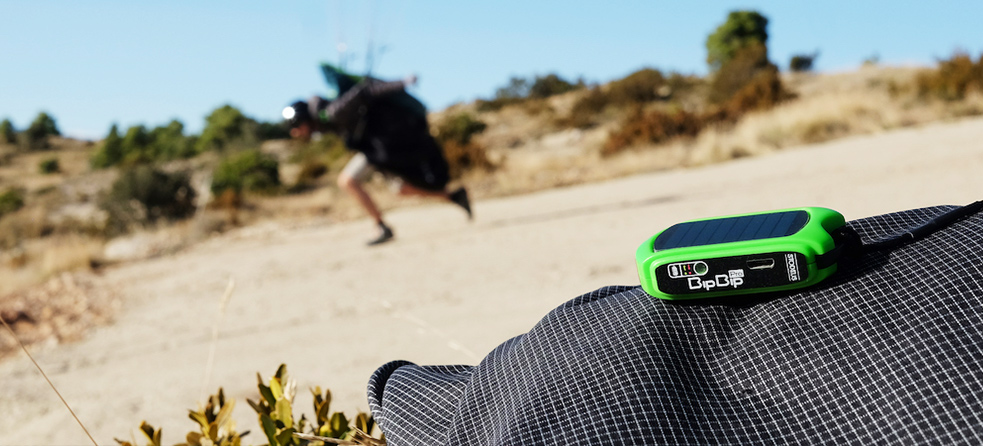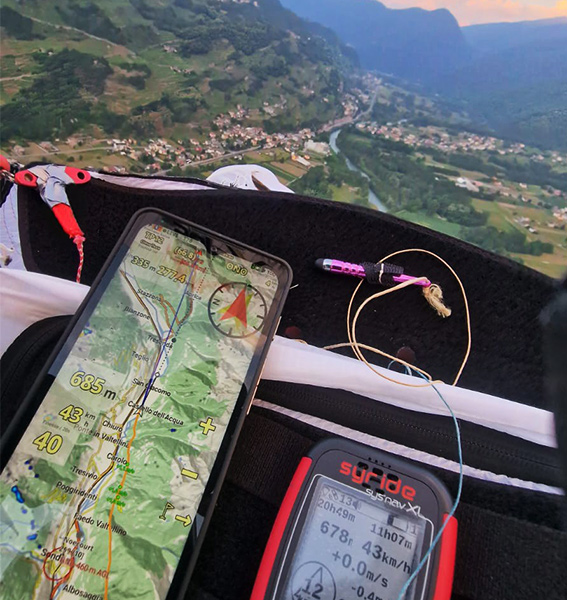Differences between variometers and paragliding GPS : how do they work ?


If you're a paragliding enthusiast or a seasoned paraglider pilot, you know how essential precision instrumentation is for an optimal flying experience. Two of the most commonly used tools in free flight are the variometer (or vario) and the GPS. In this article, we'll take an in-depth look at these two instruments, understand how they work, and discover their fundamental differences to help you make the best choice for your next paragliding flight.
WHAT IS A PARAGLIDING VARIOMETER USED FOR ?
A variometer, often called a vario, is an essential flight instrument for paraglider pilots. Its main role is to measure the vertical speed of your paraglider's ascent or descent in relation to ground altitude. It provides crucial information on altitude variations in real time, enabling the pilot to make decisions during the flight.
Uses of a variometer for paragliding flight
Paragliding variometers are designed to provide several essential functions for paragliders :
-
Vertical speed measurement : The vario indicates your altitude variation and displays the speed at which you gain or lose altitude in m/s. This helps you to know whether you need to use the zone to climb, for example, or to exit a descending zone.
-
Thermal detection : The greatest use of vario systems is to tell you where thermals - updrafts of warm air - are located, by measuring rapid variations in vertical speed. Thermals are essential for prolonging your flight.
-
Audible alarms : Variometers generally emit audible signals to alert the pilot when entering a thermal.
-
On-screen display : Information is usually displayed on a screen, allowing the pilot to consult important data.
What are the differences between variometers bip bip, alti variometers and variometers GPS ?
There are several types of variometers on the air sports market, including vario bip bip, alti vario and alti vario GPS. Here are the main differences between them :
-
Vario bip bip : This is a basic variometer that focuses mainly on vertical speed measurement. It is generally simple to use and is suitable for beginner pilots.
-
Alti vario : The alti vario is more advanced, as it combines altitude and vertical speed measurement. It offers greater precision and is used by most intermediate and advanced pilots.
-
Vario GPS : This integrates the functions of a standard variometer with a global positioning system (GPS). Pilots can therefore track their position on a map and plan flight routes.
It's worth noting that some advanced variometers also incorporate GPS navigation functions, combining the best of both worlds.
WHAT IS A PARAGLIDING GPS USED FOR ?
GPS (Global Positioning System) is another valuable tool for paraglider pilots. Unlike the variometer, the GPS focuses primarily on navigation and geographic location. Here's how a GPS can be useful during a paragliding flight :
Using a GPS for paragliding
-
Precise location : GPS shows you your exact position on the earth, which is essential for in-flight navigation.
-
Flight itinerary : You can plan a precise flight itinerary in advance, avoiding restricted or dangerous areas.
-
Flight tracking : GPS records your flight, including altitude, speed, distance traveled, and much more. This data can be useful for post-flight analysis.
What are the differences between GPS and GPS Nav ?
In paragliding, you'll also come across terms like "GPS" and "GPS Nav." Let's take a look at the differences between these two types of instrument :
-
GPS : A standard GPS is all about location. It shows you where you are on a map, records your flight route and provides you with a whole host of other data.
-
GPS Nav : GPS Nav, or navigation GPS, is a GPS designed specifically for the needs of pilots. It generally offers more advanced navigation features, including the ability to track waypoints and predefined routes.

THE FUNDAMENTAL DIFFERENCES BETWEEN VARIOMETERS AND PARAGLIDING GPS
Now that we've looked in detail at variometers and paraglider GPS, let's review the fundamental differences between these two types of instrument :
-
Main function: The variometer focuses on altitude and vertical speed measurement, while the GPS concentrates on navigation and positioning.
-
Main use : Variometers are used to maintain, detect thermals and provide basic information for piloting. GPS are mainly used for route planning, localization and in-flight navigation.
-
Possible combinations : Some advanced variometers integrate GPS navigation functions, offering an all-in-one solution for paraglider pilots. In fact, this is the most common product category !
-
Complexity : Variometers are generally simpler to use, while GPS systems can be more complex because of the functions they offer, which you have to learn to understand and exploit.
-
Price : Variometers are generally less expensive than paragliding GPS units, due to their more limited functionality.
CONCLUSION :
To sum up, the choice between a variometer and a GPS will depend on your specific needs as a paraglider pilot. Some pilots prefer to use the variometer alone, as they don't need complex instruments and data. Other performance-oriented pilots may need additional information, such as glide ratio to next point, glide ratio to goal or last thermal detected. In any case, these two tools are essential for improving the accuracy of your paragliding flights.
Don't forget that there are a number of brands and models on the market, including Syride and Flymaster, who are market leaders thanks to their comprehensive, well-thought-out range of alti-vario-GPS. Before making your choice, it's advisable to do your research, consult the opinions of experienced paragliding pilots, and take into account your level of paragliding skill as well as your specific instrumentation needs. Once you've made the right choice, you'll be ready to take to the skies with confidence, knowing you have the best instruments to guide you through your paragliding flight.
CONSULT THE GUIDE TO PARAGLIDING FLIGHT INSTRUMENTS :
Paragliding flight instruments : a complete guide to the right equipment
What paragliding flight instruments do I need ?
How to choose your paragliding flight instruments ?
What are the best GPS variometers for paragliding ?
How much does a paragliding GPS-variometers cost ?
Using a paragliding GPS alti veriometer : how to use the flying device ?







